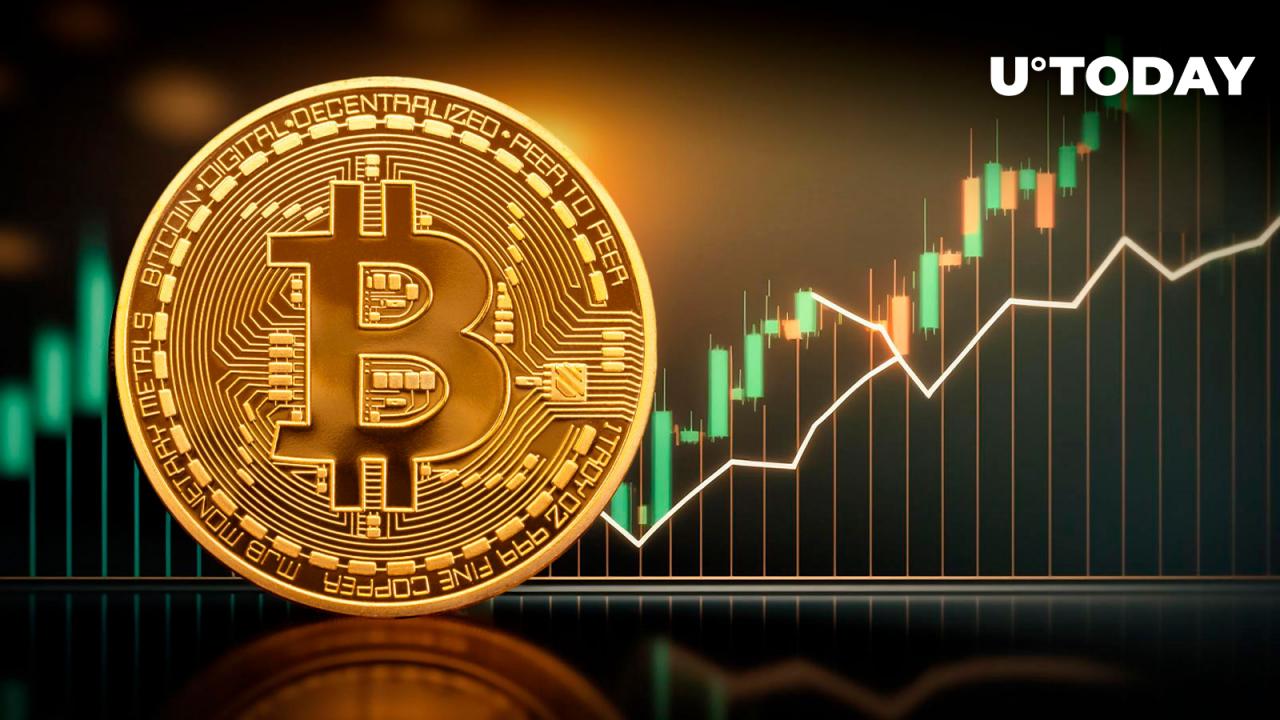Kicking off with bitcoin price usd trend, this cryptocurrency phenomenon continues to fascinate investors and analysts alike, drawing attention to its unpredictable movements and significant milestones. The evolution of Bitcoin’s price has been marked by extraordinary highs and lows, influenced by a variety of factors ranging from regulatory changes to market sentiment.
As we delve into the current state of Bitcoin against the USD, we will explore the metrics that define its present-day valuation, the technical indicators that aid in analysis, and the profound psychological factors that shape trading behaviors. This comprehensive overview aims to provide a clear understanding of Bitcoin’s price dynamics and its implications for future investments.
Historical Overview of Bitcoin Price Trends
Bitcoin, created in 2009 by an anonymous person or group known as Satoshi Nakamoto, has undergone a remarkable evolution in its price history. From its humble beginnings with negligible value, Bitcoin has experienced significant milestones that have shaped its reputation as a pioneering cryptocurrency. These milestones include notable price surges and crashes, influenced by various external events, regulatory changes, and evolving market sentiment.
Major Milestones in Bitcoin Price History
The trajectory of Bitcoin’s price has been marked by several key events that led to drastic fluctuations. Initially, Bitcoin traded for less than a cent, but it reached $1 for the first time in February 2011. The price surged to approximately $31 later that year before a crash brought it down to around $2. The real breakthrough came in late 2013, when Bitcoin hit an all-time high of nearly $1,200, driven by increased media attention and adoption by online merchants.
The price dropped significantly in 2014 following the Mt. Gox exchange hack, which caused public distrust and regulatory scrutiny. However, by late 2017, Bitcoin surpassed its previous high, reaching nearly $20,000, fueled by institutional interest and a surge in retail investors. The volatility continued with significant corrections, culminating in a bear market in 2018.
Impact of Regulatory Changes
Regulatory changes have played a crucial role in influencing Bitcoin prices. In 2013, China prohibited financial institutions from handling Bitcoin transactions, leading to a sudden drop in its value. Conversely, positive regulatory developments, such as the approval of Bitcoin futures trading by the CFTC in 2017, often led to price surges. The evolving regulatory landscape continues to impact investor sentiment and market stability.
Current Bitcoin Price Metrics
As of October 2023, Bitcoin’s price against the USD is hovering in a volatile range, reflecting the dynamic nature of the cryptocurrency market. Current statistics show that Bitcoin’s price is approximately $35,000. Several factors are influencing its price in today’s market, including macroeconomic trends, technological advancements, and market sentiment.
Current Statistics
The current market capitalization of Bitcoin is estimated at around $680 billion, with trading volumes ranging from $25 billion to $40 billion daily. These metrics demonstrate the high level of activity and interest in Bitcoin as an asset class.
Factors Influencing Bitcoin’s Price
Several key factors currently influence Bitcoin’s price:
- Increased adoption by institutional investors
- Regulatory developments across different jurisdictions
- Macroeconomic conditions, such as inflation rates and interest rates
- Technological advancements in blockchain and related technologies
- Market sentiment and news cycles, including social media influence
Recent Trends in Trading Volumes
Bitcoin’s trading volumes have shown a notable increase, particularly as more platforms and exchanges enable access to cryptocurrency markets. This uptick in trading activity often correlates with price movements, making it an essential factor for traders and investors to monitor.
Technical Analysis of Bitcoin Price Movements
Technical analysis plays a significant role in understanding Bitcoin price trends. Traders utilize various technical indicators to analyze price movements and predict future behavior.
Common Technical Indicators
Among the various indicators used, the following are particularly prominent:
- Moving Averages (MA)
- Relative Strength Index (RSI)
- Moving Average Convergence Divergence (MACD)
- Bollinger Bands
- Fibonacci Retracement Levels
Chart Patterns Summary
A table summarizing the most common chart patterns observed in Bitcoin trading includes:
| Chart Pattern | Description |
|---|---|
| Head and Shoulders | A reversal pattern indicating a change in trend direction. |
| Double Top/Bottom | Signals potential reversals after a trend. |
| Ascending/Descending Triangle | Continuation patterns indicating potential breakout or breakdown. |
Utilizing Moving Averages
Moving averages, such as the simple moving average (SMA) and exponential moving average (EMA), are essential for forecasting Bitcoin price movements. Traders often look for crossovers between different moving averages to identify buy or sell signals. For instance, when the short-term MA crosses above the long-term MA, it may indicate a bullish trend.
Influences on Bitcoin Price Direction
Various external factors significantly affect Bitcoin’s price direction. Understanding these influences can provide valuable insights for investors and traders alike.
External Factors Affecting Bitcoin Price
Key external factors include:
- Global economic conditions, including inflation and currency fluctuations
- Legislative changes and enforcement actions from regulatory bodies
- Market sentiment driven by news and social media
- Technological breakthroughs in blockchain and cryptocurrency technology
- The performance of traditional financial markets
Macroeconomic Indicators
Macroeconomic indicators, such as GDP growth rates, unemployment rates, and central bank policies, can greatly influence Bitcoin’s valuation. For instance, in times of economic uncertainty, investors may flock to Bitcoin as a hedge against inflation, affecting its demand and price.
Comparative Price Trends
When comparing Bitcoin price trends with other cryptocurrencies and asset classes, it becomes evident that Bitcoin often leads the market. For example, during bullish phases, altcoins typically follow Bitcoin’s price movements, while in bearish markets, they tend to experience sharper declines.
Future Projections for Bitcoin Price
The future of Bitcoin pricing could be influenced by numerous factors, including technological advancements and broader market adoption. Experts have varying opinions on Bitcoin’s potential trajectory over the next five years.
Technological Advancements Implications
Technological improvements in transaction scalability, security, and user experience could significantly enhance Bitcoin’s adoption and, consequently, its price. Innovations such as the Lightning Network aim to facilitate faster and cheaper transactions.
Expert Opinions on Future Projections
Analysts and experts project a wide range of potential price scenarios for Bitcoin, including:
- Conservative estimates suggest a price range of $50,000 to $100,000.
- Optimistic forecasts predict prices could soar to $250,000 or more.
- Pessimistic views warn of potential declines if regulatory pressures increase.
Forecasting Models
Several models are utilized for predicting Bitcoin prices, including the stock-to-flow model, which suggests that Bitcoin’s scarcity will drive its price upward. Other models consider market sentiment and historical price patterns to project future movements.
Bitcoin Price Volatility
Bitcoin is notorious for its price volatility, which can significantly impact investors. Understanding the causes of this volatility is crucial for managing risk.
Causes of Price Volatility
Several factors contribute to Bitcoin’s price volatility, including:
- Market speculation and hype
- Liquidity issues during periods of high trading activity
- Regulatory news and geopolitical events
- Technological breakdowns or security breaches
Historical Events Leading to Extreme Price Swings
Historical events such as the 2013 Silk Road shutdown and the 2020 COVID-19 market crash have led to extreme price fluctuations. These incidents highlight the sensitivity of Bitcoin prices to external shocks.
Strategies for Mitigating Risk
Investors can adopt several strategies to mitigate risks associated with Bitcoin investments:
- Diversifying their portfolio to include other asset classes
- Utilizing stop-loss orders to limit potential losses
- Staying informed about market developments and regulatory changes
Bitcoin Price and Market Psychology
Investor psychology plays a vital role in Bitcoin price trends, often driving irrational market behaviors. Understanding these psychological aspects can provide deeper insights into market movements.
Investor Psychology Impact
Emotions such as fear and greed significantly influence trading decisions. During bullish markets, greed may drive prices to unsustainable levels, while fear can lead to panic selling in bearish conditions.
Behavioral Biases in Trading Decisions
Several behavioral biases commonly influence Bitcoin trading, including:
- Herd mentality, leading to mass buying or selling
- Confirmation bias, where traders seek information that supports their beliefs
- Loss aversion, causing investors to hold onto losing positions longer than advisable
Role of Social Media and News
Social media platforms and news outlets significantly shape public perception of Bitcoin. Positive news can lead to price surges, while negative coverage can result in declines. Monitoring these channels is essential for understanding market sentiment and potential price movements.
Case Studies of Notable Price Surges and Drops
Bitcoin’s history is filled with dramatic price changes, serving as valuable learning opportunities for investors and market participants.
Instances of Dramatic Price Changes
Notable instances include:
- The surge to nearly $20,000 in late 2017, fueled by media hype and investor enthusiasm.
- The crash to around $3,000 in 2018, marked by regulatory uncertainty and market correction.
- The rapid rise to $64,000 in April 2021, driven by institutional investment and mainstream adoption.
Lessons from Past Bull and Bear Markets
Key lessons from past bull and bear markets include:
- The importance of conducting thorough research before investing.
- Recognizing market cycles and the potential for rapid price reversals.
- The necessity of having a well-defined investment strategy to navigate volatility.
Common Themes and Patterns Observed
Observations from price surges and drops reveal common themes such as the role of speculative trading and the impact of external news events on investor sentiment. Understanding these patterns can help investors make more informed decisions in the ever-evolving cryptocurrency landscape.
Final Review
In conclusion, the journey of Bitcoin’s price thus far has been nothing short of remarkable, with lessons learned from past trends and insights for what lies ahead. Understanding this intricate landscape not only equips investors with the knowledge to make informed decisions but also emphasizes the importance of adapting to the ever-evolving nature of the cryptocurrency market. As we move forward, keeping an eye on both technical indicators and market psychology will be crucial for navigating the future of Bitcoin pricing.
Question Bank
What factors influence the Bitcoin price trend?
The Bitcoin price trend is influenced by market demand, regulatory news, technological developments, and overall economic conditions.
How volatile is Bitcoin compared to other assets?
Bitcoin is generally more volatile than traditional assets like stocks or bonds, experiencing larger price swings in shorter time frames.
What are common strategies for investing in Bitcoin?
Common strategies include dollar-cost averaging, long-term holding, and utilizing technical analysis for trading.
How do macroeconomic trends affect Bitcoin pricing?
Macroeconomic trends such as inflation, interest rates, and global market conditions can significantly impact Bitcoin’s valuation.
What role does market psychology play in Bitcoin trading?
Investor sentiment, driven by news and social media, can significantly affect trading decisions and contribute to price volatility.

